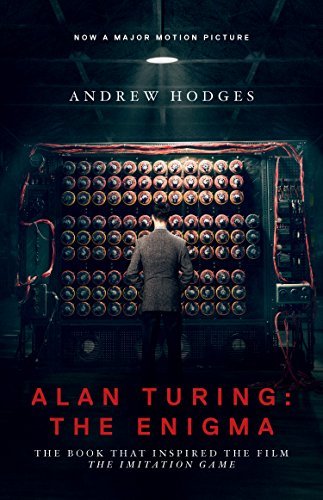
Turing's Cathedral: The Origins of the Digital Universe
Book Description
In a hidden sanctuary of war-torn America, a group of brilliant minds races against time to forge a new reality. Amidst the chaos of the Second World War, the visionary Alan Turing and his compatriots breathe life into machines that would forever alter the fabric of existence. "Turing's Cathedral" unveils the thrilling story of how their groundbreaking ideas laid the foundation for our digital universe. As algorithms become gods, humanity grapples with their consequences. What happens when man’s creations surpass their creators, igniting a battle between progress and ethics? Dive into this electrifying journey where the future hangs in the balance.
Quick Book Summary
"Turing’s Cathedral" by George Dyson charts the birth of the digital age, focusing on the remarkable group of scientists and engineers who turned the concept of a universal computer into reality. Set against the backdrop of World War II and its aftermath, the book intertwines the stories of visionaries like Alan Turing, John von Neumann, and their colleagues at Princeton’s Institute for Advanced Study. Their collaborative effort led to the first practical stored-program computers, underpinning the development of modern technologies. Dyson explores not only the technical leaps, but also the profound social and ethical implications as humanity builds machines capable of thinking, calculating, and potentially outpacing their creators. The narrative captures both the triumph and unease that accompany the technological transformation of the world.
Summary of Key Ideas
Table of Contents
Genesis of the Digital Universe
World War II catalyzed an unprecedented convergence of scientific minds and government resources, setting the stage for the digital revolution. Dyson depicts how mathematicians, engineers, and physicists—many fleeing the turmoil in Europe—found refuge and opportunity in America. At the Institute for Advanced Study in Princeton, pioneers like John von Neumann drew inspiration from Alan Turing’s theoretical work, focusing on building a universal computing machine. The book vividly describes the race against time and necessity, with the urgent demands of code-breaking, atomic weapons, and defense spurring innovation.
Collaboration and Rivalry Among Visionaries
Despite a common purpose, friction and camaraderie abounded. Brilliant individuals such as von Neumann, Turing, Stanislaw Ulam, and J. Robert Oppenheimer both collaborated and clashed, driven by ego, ambition, and differing visions for the computer’s role. The development of the first stored-program computers involved not just technical ingenuity but also the navigation of institutional and personal politics. Dyson illustrates these tensions, emphasizing how collective achievement often balanced precariously on the edge of rivalry and unity.
From Warfare to Computation
In the war’s aftermath, attention shifted from immediate military needs to broader scientific applications. The programmable digital computer, once envisioned for calculating ballistic trajectories and hydrogen bomb designs, opened new vistas in mathematics, science, weather modeling, and artificial life. Dyson details the incremental progress from machines like ENIAC and EDVAC to the Institute’s own computer, highlighting breakthroughs such as the stored-program architecture and early use of binary code. The groundwork for modern computing had been laid.
Birth of Artificial Intelligence and Algorithms
With functionality came deep philosophical questions. The architects of the digital universe grappled with the implications of building machines that could emulate aspects of human thought. As algorithms began to process and generate information autonomously, creators faced an unforeseen challenge: the potential for computers to outpace their originators. Dyson probes anxieties regarding artificial intelligence, loss of human control, and the unpredictable consequences of exponential technological growth.
Ethical and Social Reverberations
Ultimately, "Turing’s Cathedral" is a meditation on legacy and responsibility. Dyson concludes by reflecting on the digital cathedral the pioneers built—both a monument to human ingenuity and a harbinger of unforeseen ethical dilemmas. He calls attention to the world they unwittingly set in motion, raising questions about how we might guide or restrain our creations. As humanity increasingly inhabits a universe shaped by code, the choices and caution exercised by the original builders gain urgent contemporary relevance.
Download This Summary
Get a free PDF of this summary instantly — no email required.





